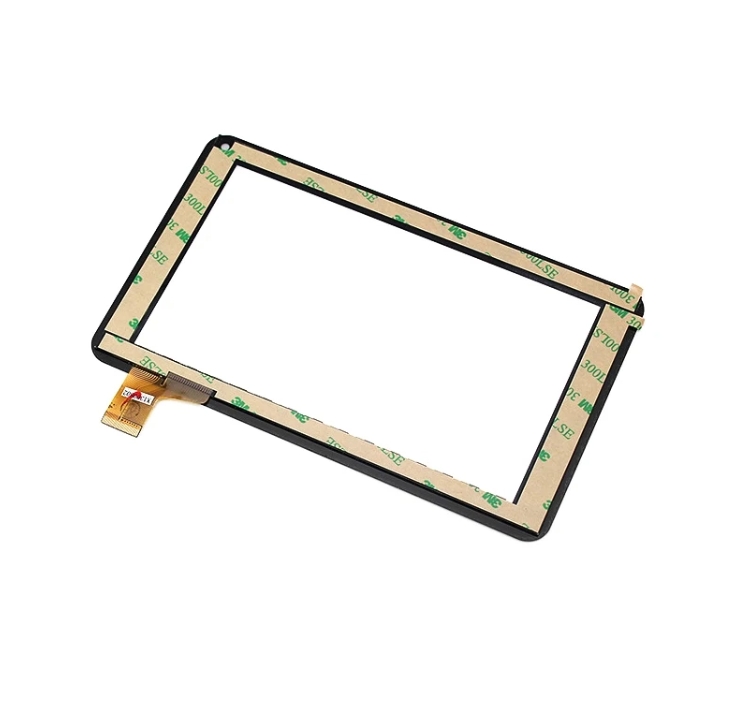Views: 324 Author: Vickey Publish Time: 2024-04-08 Origin: Site








In the world of touchscreen technology, resistive touch screens have long been a popular choice for a variety of applications due to their affordability and versatility. However, one question that often arises is: What is the lifespan of a resistive touch screen? In this comprehensive guide, we will delve into the factors that influence the lifespan of resistive touch screens, compare them to capacitive touch screens, and provide insights into maximizing their longevity.
Resistive touch screens consist of multiple layers, typically two transparent conductive layers separated by a small gap. When pressure is applied to the screen, the top layer makes contact with the bottom layer, resulting in a change in electrical current that is detected by the touch screen controller. This pressure-sensitive design allows resistive touch screens to respond to input from fingers, styluses, or any object that applies pressure.
1.Material Quality:The quality of materials used in the construction of resistive touch screens greatly impacts their lifespan. High-quality materials are more durable and resistant to wear and tear, resulting in a longer lifespan.
2.Frequency of Use:The frequency at which a resistive touch screen is used can also affect its lifespan. Screens that are used more frequently are subject to greater wear and tear, potentially leading to a shorter lifespan.
3.Environmental Factors:Environmental conditions such as temperature, humidity, and exposure to dust and moisture can impact the lifespan of a resistive touch screen. Extreme conditions can cause the screen to degrade more quickly, leading to malfunctions or failure.
4.Maintenance:Proper maintenance and care can significantly extend the lifespan of a resistive touch screen. Regular cleaning with appropriate cleaning solutions and avoiding harsh chemicals or abrasive materials can help prevent damage and maintain optimal performance.
While resistive touch screens have their advantages, they are often compared to capacitive touch screens, which utilize a different technology. Capacitive touch screens are constructed with a single layer of glass or plastic coated with a transparent conductive material such as indium tin oxide (ITO). Instead of relying on pressure, capacitive touch screens detect changes in electrical capacitance caused by the proximity of a conductive object, such as a finger.

In terms of lifespan, both resistive and capacitive touch screens can have long lifespans when properly maintained. However, there are some differences to consider:
1.Durability:Resistive touch screens are generally more durable and resistant to physical damage than capacitive touch screens. Their multi-layer construction makes them less prone to cracking or shattering upon impact, resulting in a longer lifespan in rugged environments.
2.Sensitivity:Capacitive touch screens tend to be more sensitive and responsive to touch input compared to resistive touch screens. While this can enhance the user experience, it may also lead to faster wear and tear over time, potentially reducing the lifespan of the screen.
3.Environmental Factors:Capacitive touch screens may be more susceptible to environmental factors such as temperature and humidity, which can affect their performance and longevity. Resistive touch screens, with their simpler construction, may be more resilient in harsh conditions.
To maximize the lifespan of a resistive touch screen, consider the following tips:
1.Proper Calibration:Regular calibration ensures accurate touch detection and prevents issues such as drifting or misalignment, which can occur over time.
2.Gentle Touch:Avoid applying excessive pressure or using sharp objects on the screen, as this can damage the sensitive layers and shorten the lifespan.
3.Regular Maintenance:Clean the screen regularly with a soft, lint-free cloth and mild cleaning solution to remove dirt, dust, and fingerprints. Avoid using abrasive materials or harsh chemicals that can damage the screen.
4.Protective Measures:Consider using screen protectors or enclosures to shield the screen from physical damage and environmental hazards.
In conclusion, the lifespan of a resistive touch screen depends on various factors including material quality, frequency of use, environmental conditions, and maintenance practices. While resistive touch screens offer durability and versatility, they are often compared to capacitive touch screens, which provide enhanced sensitivity and responsiveness. By understanding these factors and implementing proper care and maintenance techniques, you can maximize the lifespan of your resistive touch screen and ensure optimal performance for years to come.
What Is A Resistive Touchscreen Display And How Does It Work?
Can A 5 Inch Touchscreen Display Work Seamlessly with My PC?
Why Choose A 5 Inch HDMI Display with USB Touch for Your Project?
What Makes A 42 Inch Touchscreen Display Screen Ideal for Interactive Use?
Can A 42 Inch Touchscreen Display Improve Collaboration in Offices?
Can You Mount A 50-Inch Touchscreen Display on The Wall Easily?
Can A 40-Inch Touchscreen Display Replace Your Monitor And TV?